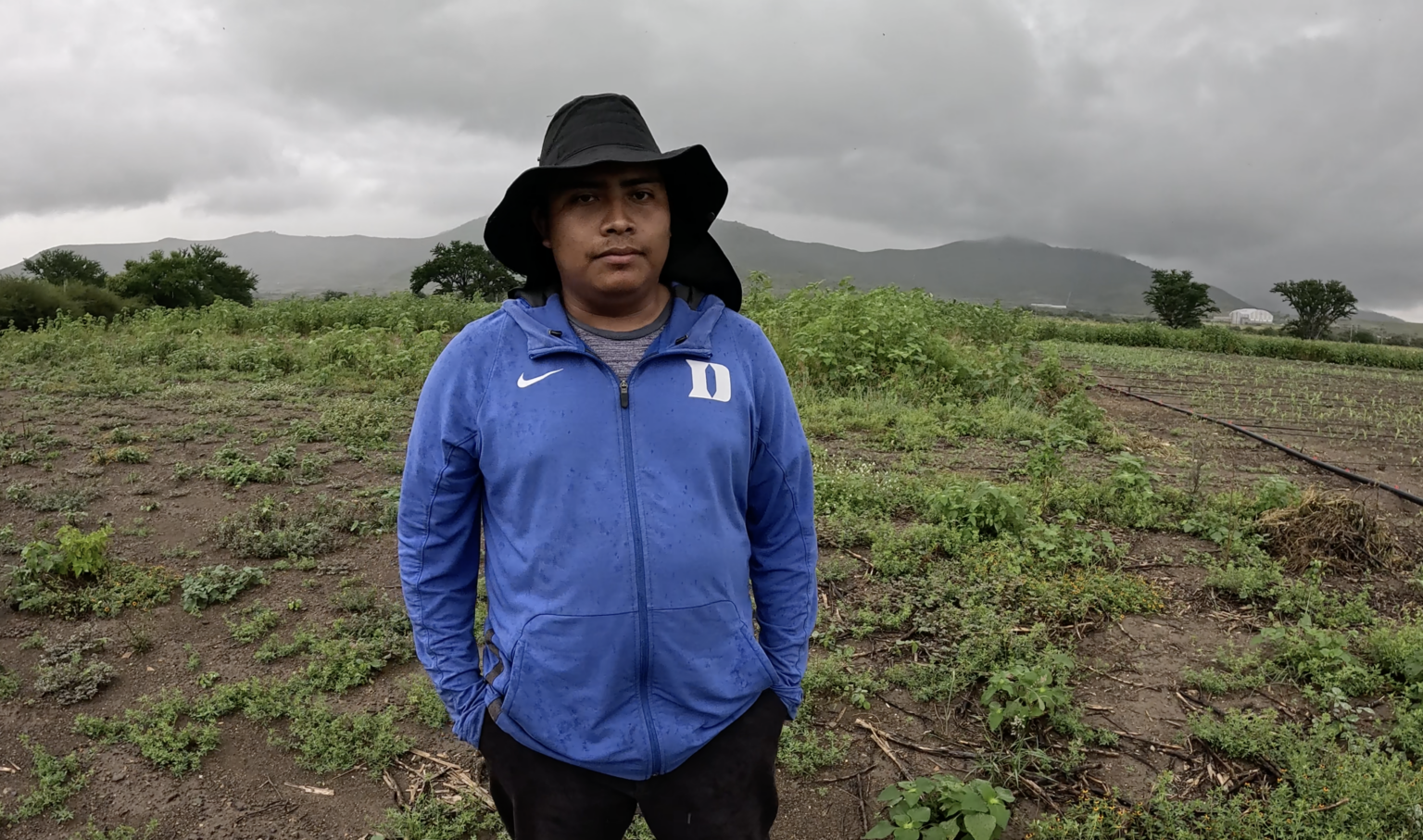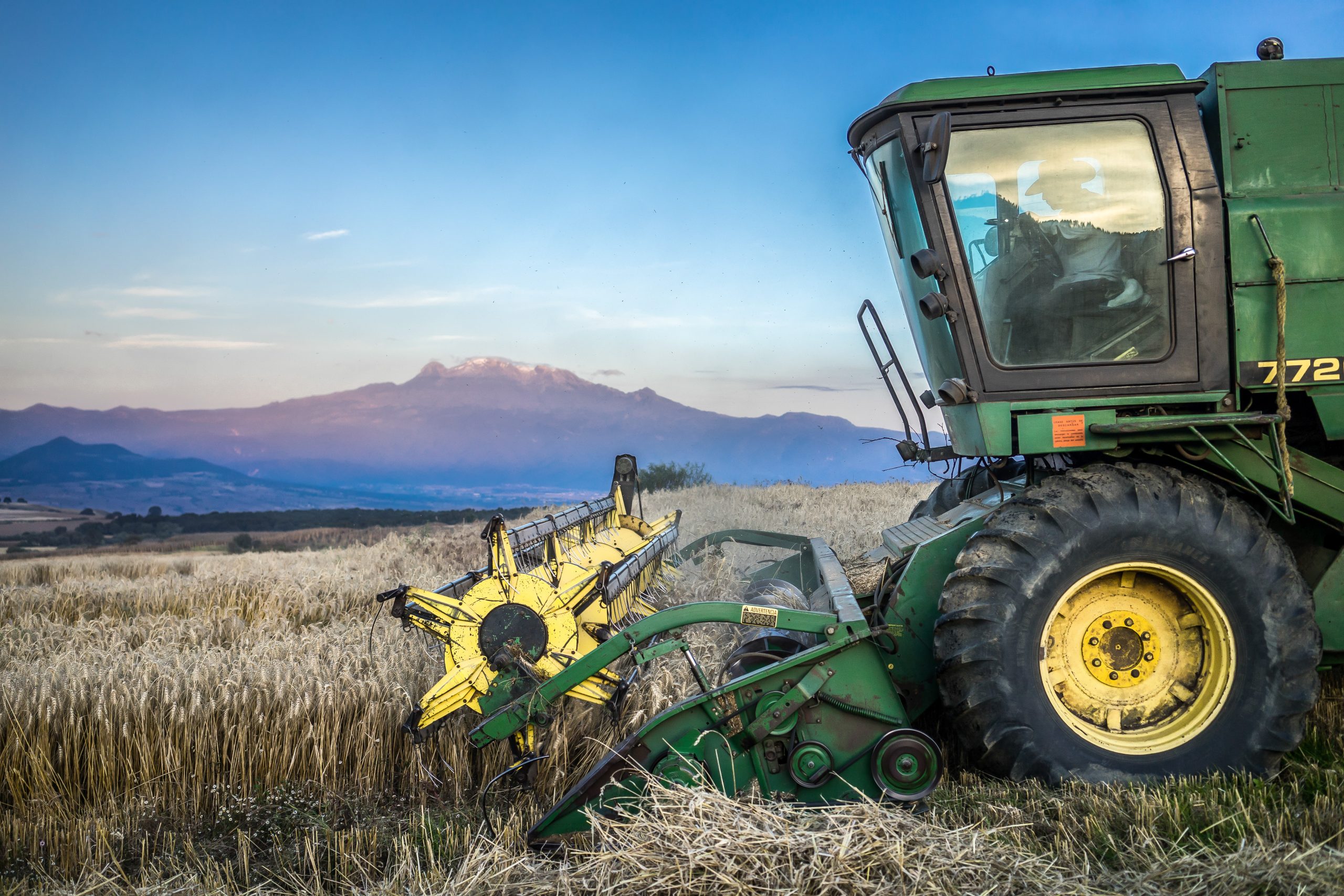In Mexico, the average farmer is 55 years old. In this context, it’s not always easy for an established farmer to accept advice from a technician who could be their son—or even their grandson. However, producers linked to Ricinomex—a biorefinery in Oaxaca collaborating with CIMMYT to promote sustainable agricultural practices—have discovered that the crop diversification proposed by their young engineers not only regenerates soil but also improves income and reshapes the image of rural extension.

Sergio Gil Hernández Pinacho is one of Ricinomex’s young technicians. Together with his colleagues, he is driving an ambitious transformation process in the Central Valleys of Oaxaca based on crop diversification.
“We are in San Martín de los Cansecos. Here, you can see our seed multiplication plot, sown to multiply alternative and cover crops.”
“In the plot, we showcase legumes such as cowpea, vigna, crotalaria, dolichos, and canavalia, along with sunflower. These species will be distributed to farmers to maximize diversification here in the Central Valleys,” he explains.
They are currently working with around 100 regular farmers and several more who participate intermittently. The main crop is castor bean, intercropped with traditional milpa. The goal is to integrate these cover crops to improve soil structure while also offering forage or marketable products.
The proposal seems simple, but for a farmer accustomed to growing the same crop year after year, it requires a mindset shift. That’s why the support provided is comprehensive.
“At Ricinomex, we advise from land preparation all the way to seed commercialization. The most popular crops have been cowpea and sunflower: they provide nitrogen, break up soil compaction, and sell well,” says Sergio. “In addition, legumes fix nitrogen, canavalia works as green manure, and sunflower breaks the soil crust. Everything depends on each farmer’s specific needs.”
This diversity serves multiple functions at once. It improves soil health by fixing nitrogen, increasing organic matter, and enhancing water infiltration. It also generates marketable products—such as castor oil or sunflower flowers—and meets local needs for forage or green manure, depending on the context. As Sergio puts it, it’s an integrated strategy where “each crop contributes something different—nutrients, structure, income…”
But the diversity is not only botanical. Ricinomex’s technical team works across Ocotlán, Ejutla, Miahuatlán, Ayoquezco, and La Ciénaga—and they are expanding into Trinidad Zaachila. This reflects the spread of a young innovation that is taking root. It demonstrates that this type of agronomic transformation is also, undeniably, a social innovation. It brings youth into central roles, revitalizes intergenerational dialogue in rural areas, and shows that smarter, more sustainable production is possible—without large investments or inaccessible technology.
Of course, the path comes with challenges. As Sergio notes, convincing a seasoned farmer to try a legume they’ve never planted can be difficult—especially when the recommendation comes from a recent graduate. On top of that, although the market for these crops is growing, there are still no consolidated channels to guarantee fair prices or consistent demand.
Sergio and his team face these barriers with patience and the support of scientific research institutions like CIMMYT, knowing that every farmer who adopts the system paves the way for others.
Thus, the proposal from CIMMYT’s Pacific South Hub and collaborators like Ricinomex not only transforms individual plots—it redefines production systems and lays the foundation for a science-backed generational shift. Instead of relying on a single crop—as is the case with conventional monocultures that degrade soil and increase risk—farmers supported by young technicians are sowing greater opportunities for sustainable rural development.
 Climate adaptation and mitigation
Climate adaptation and mitigation 
